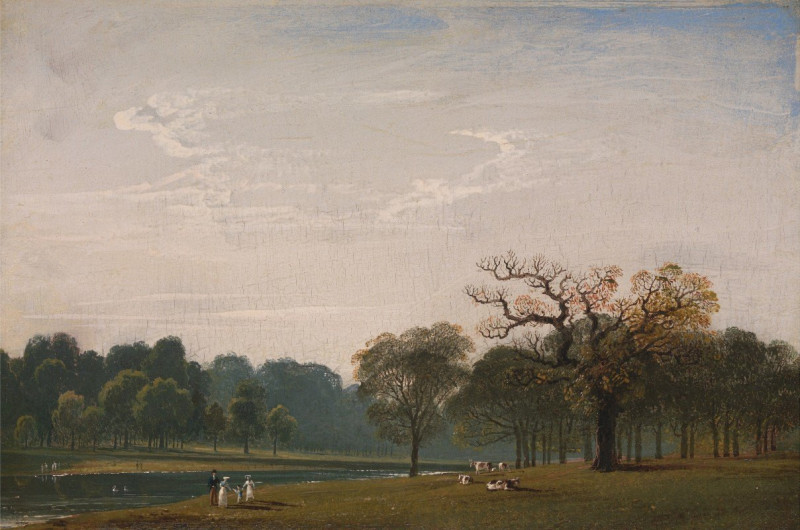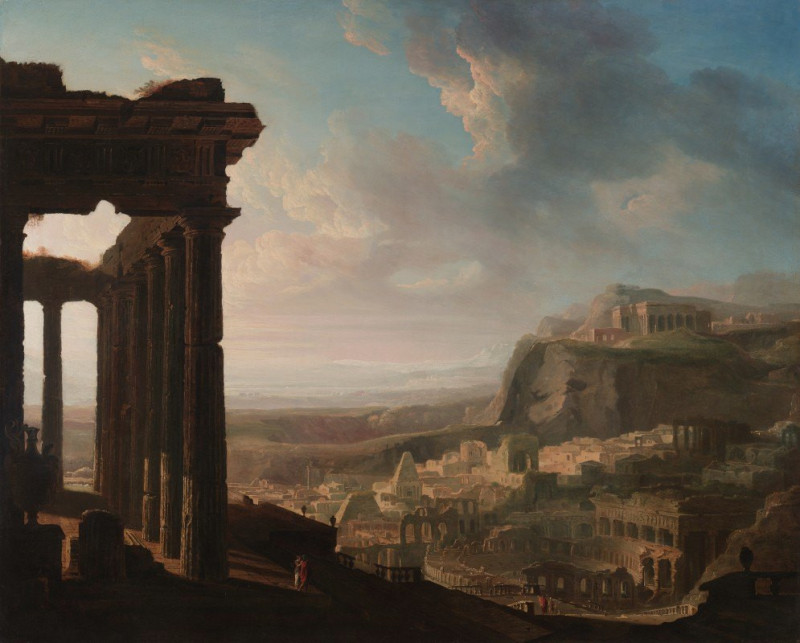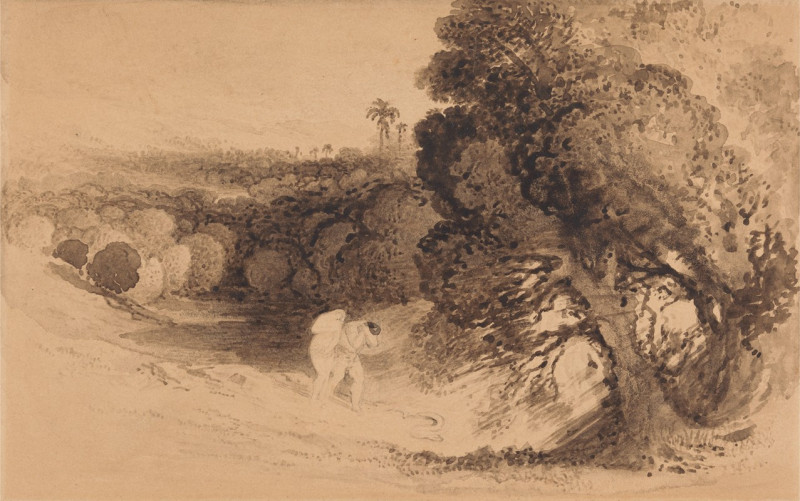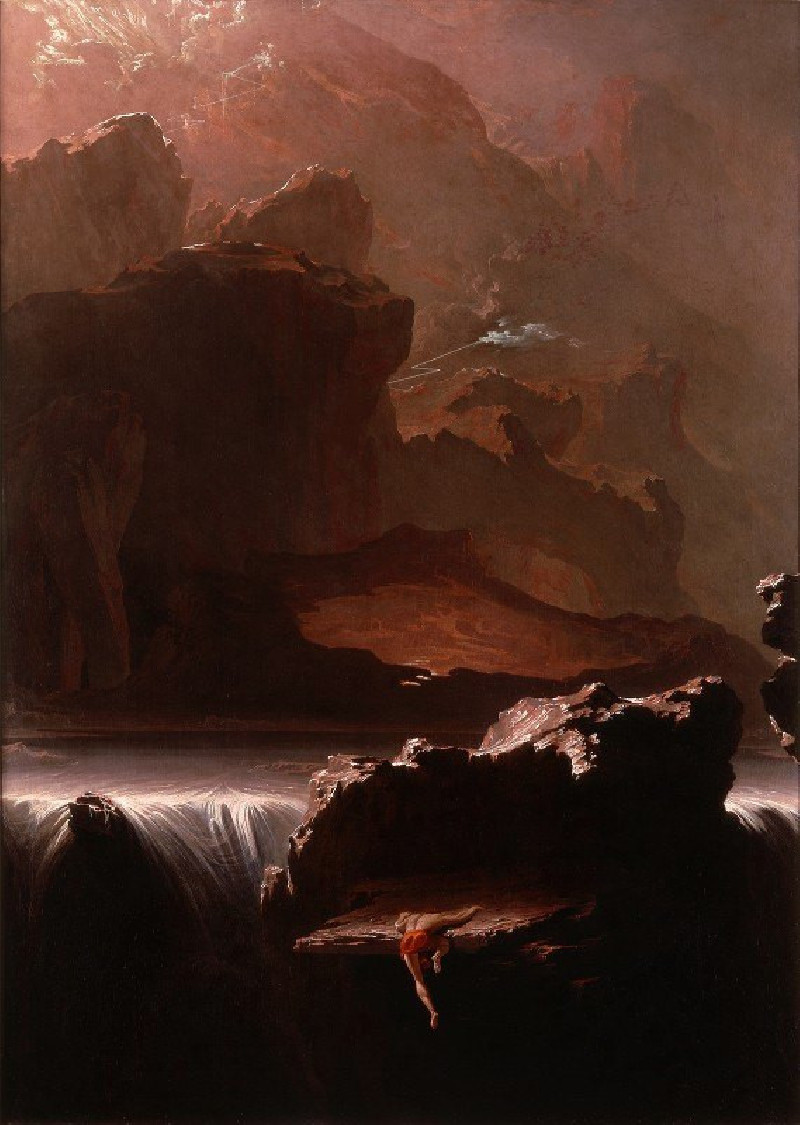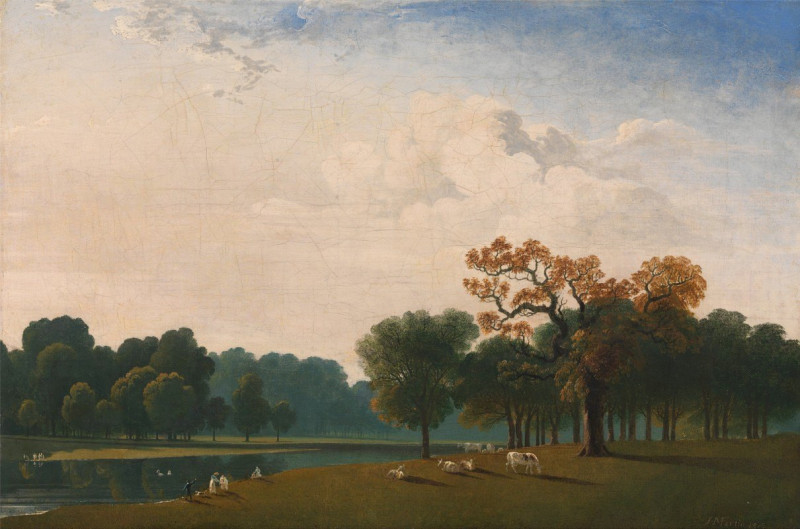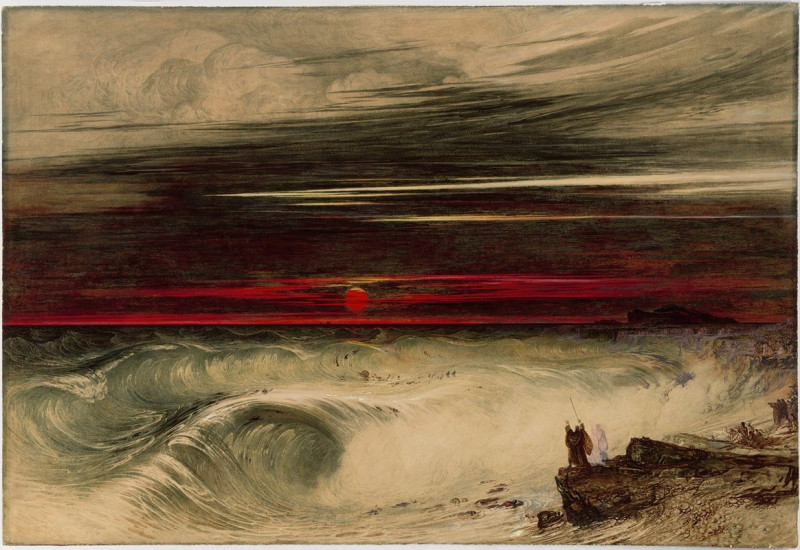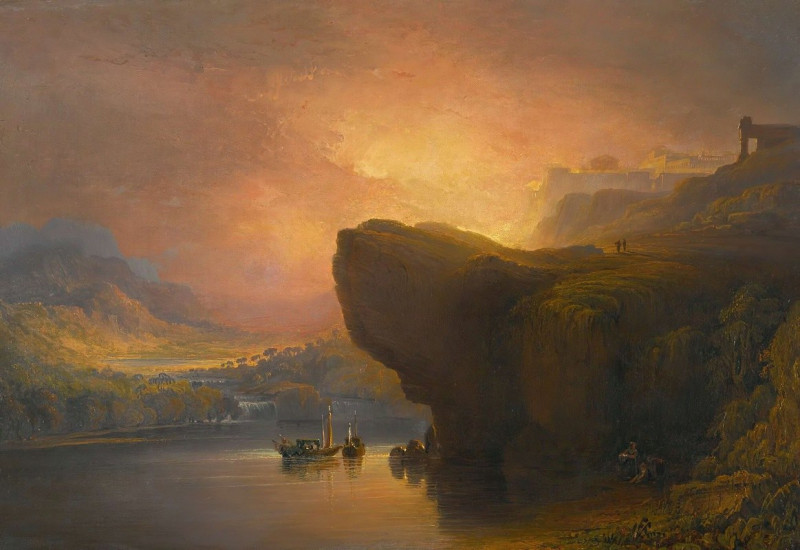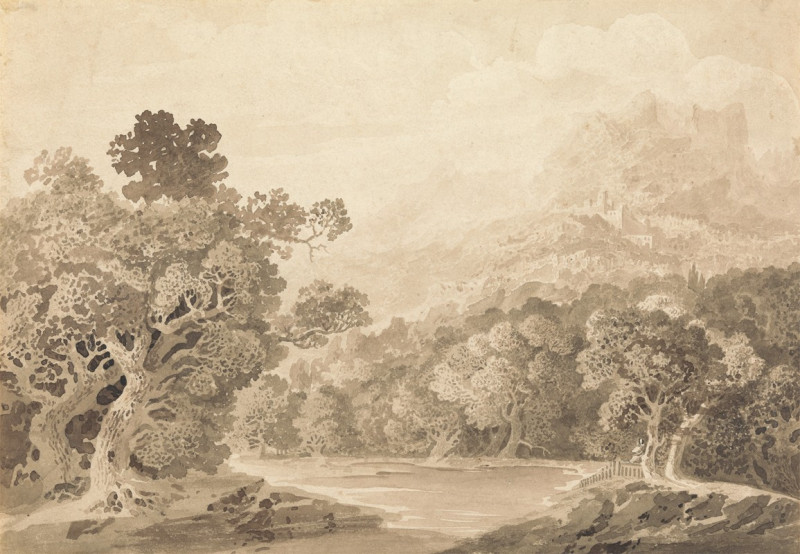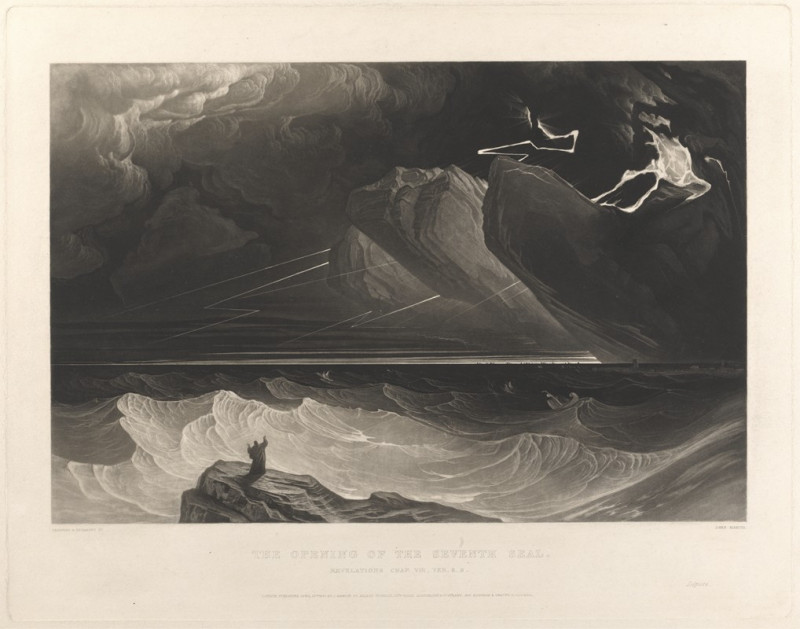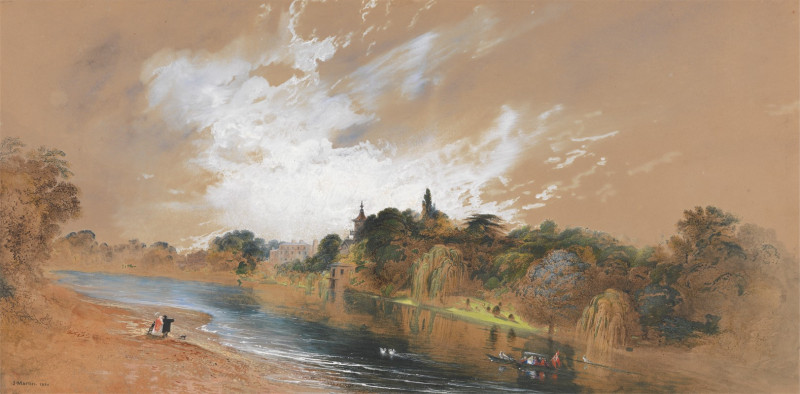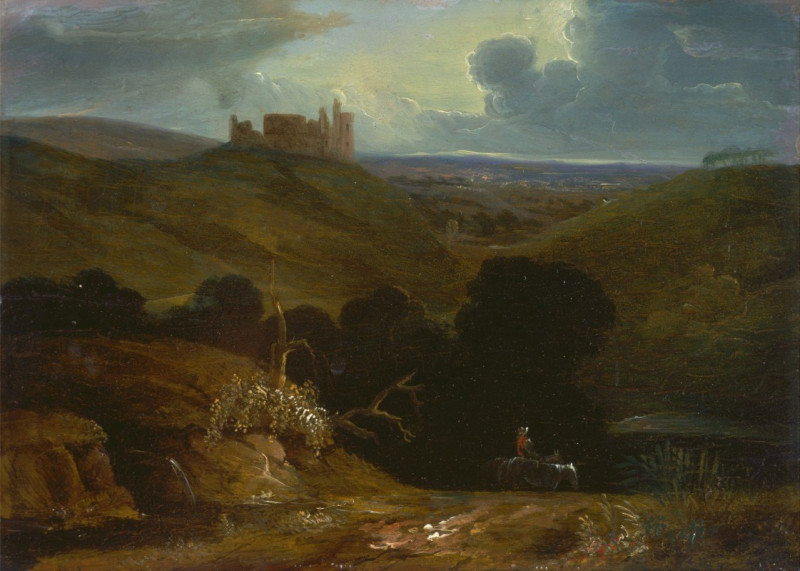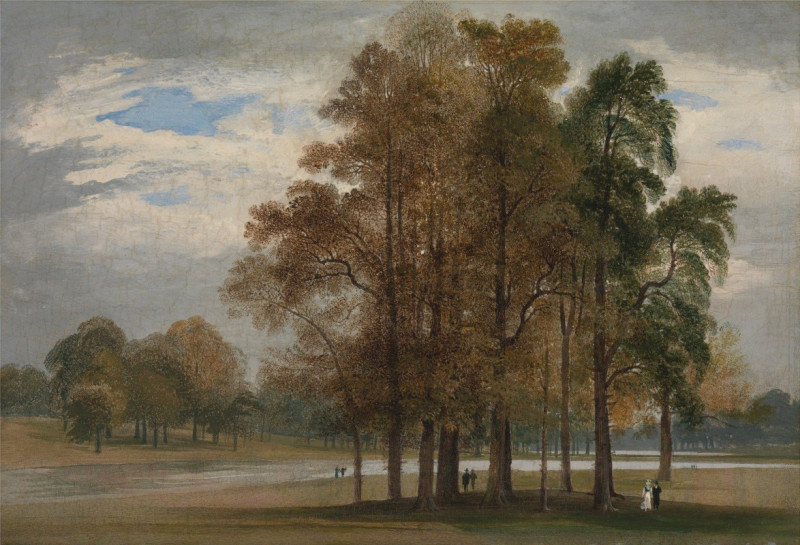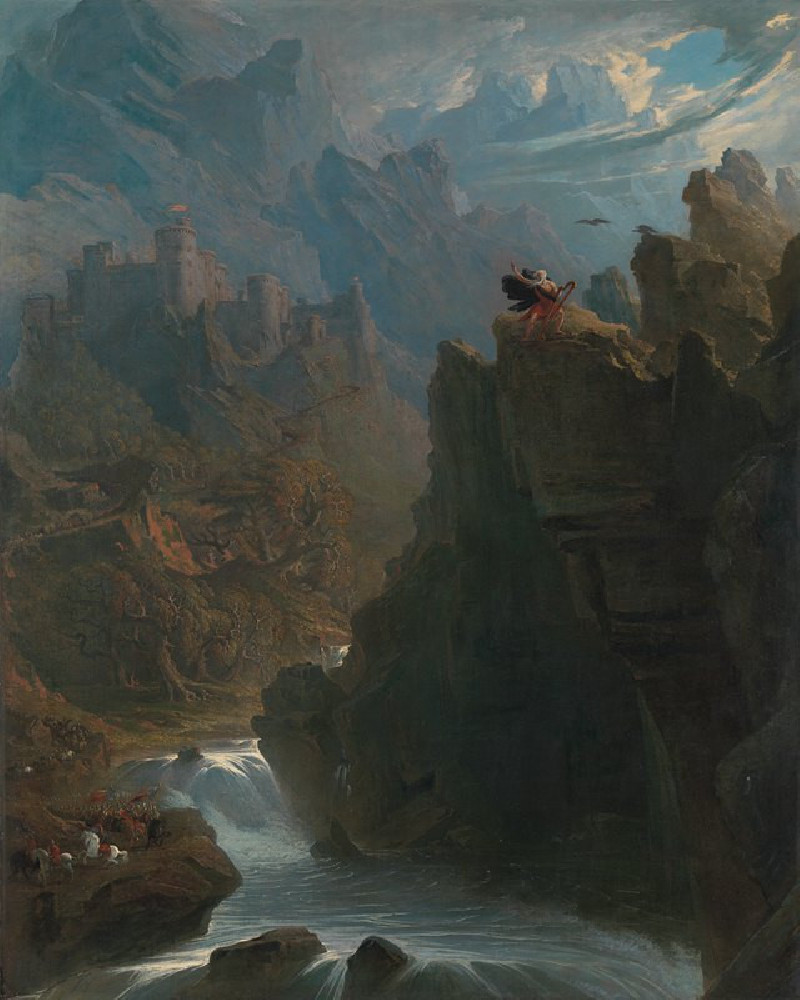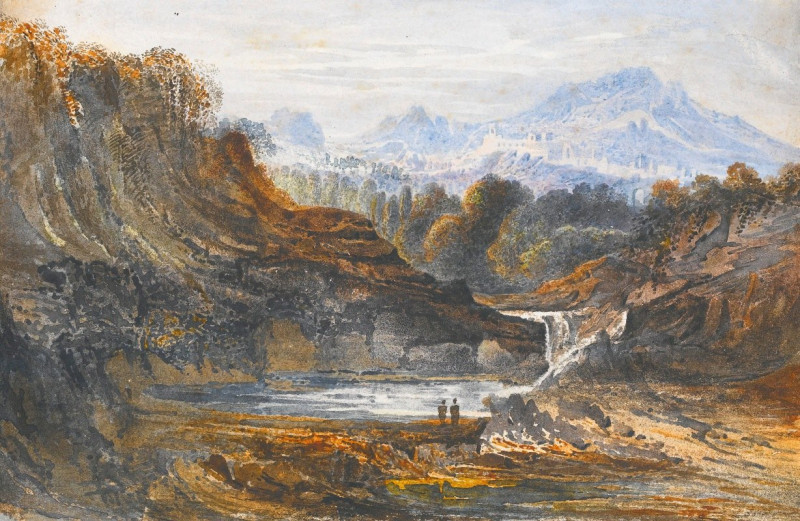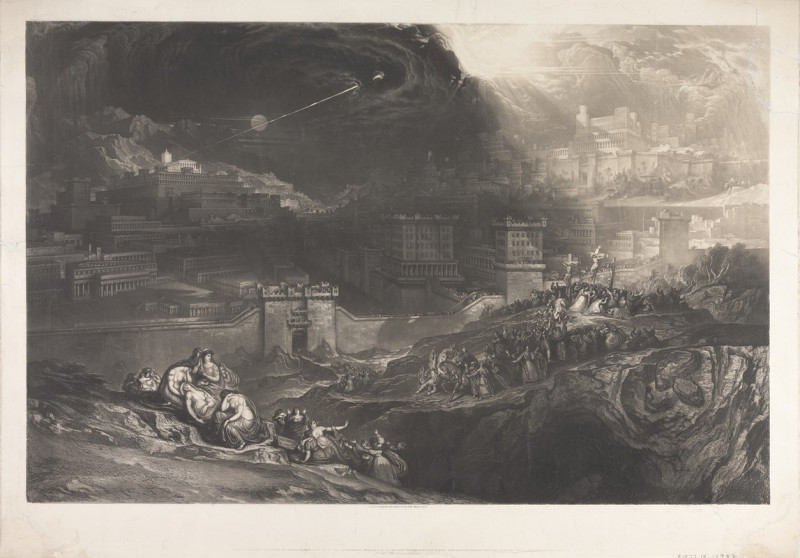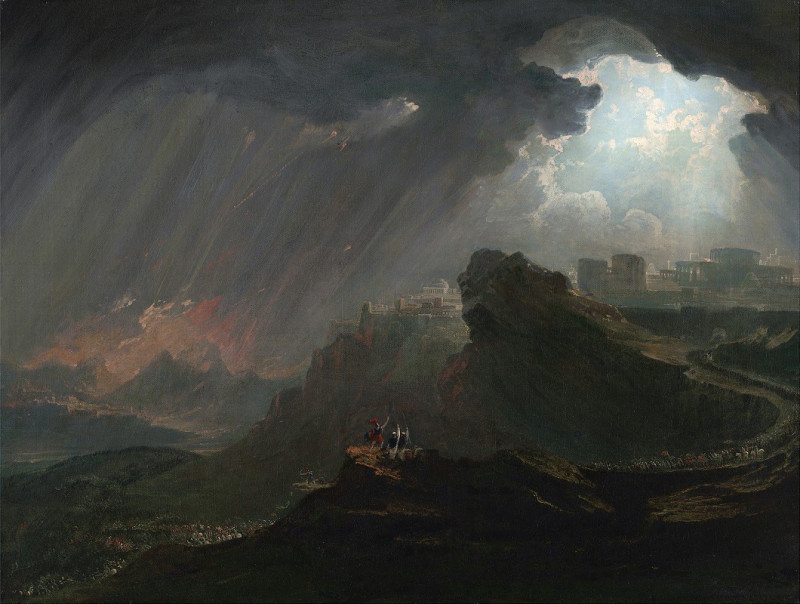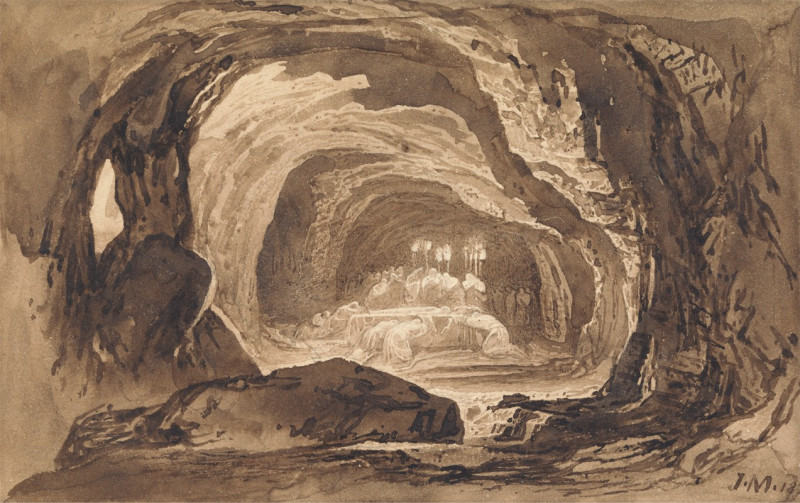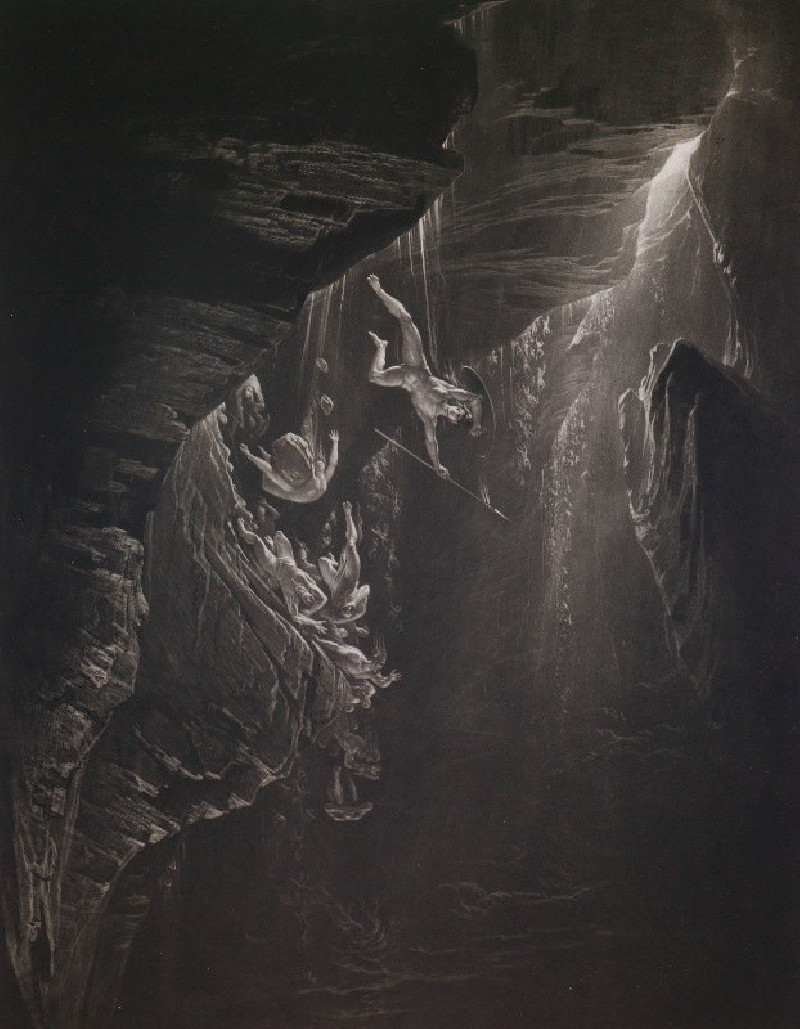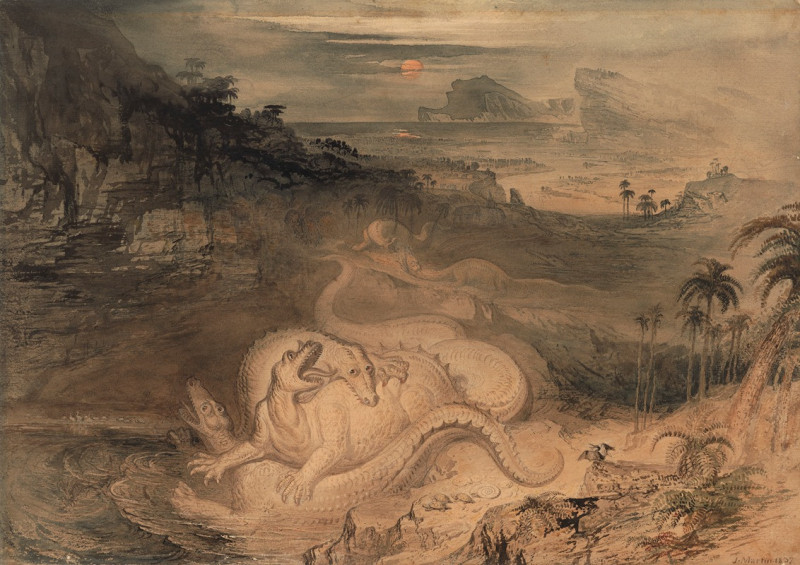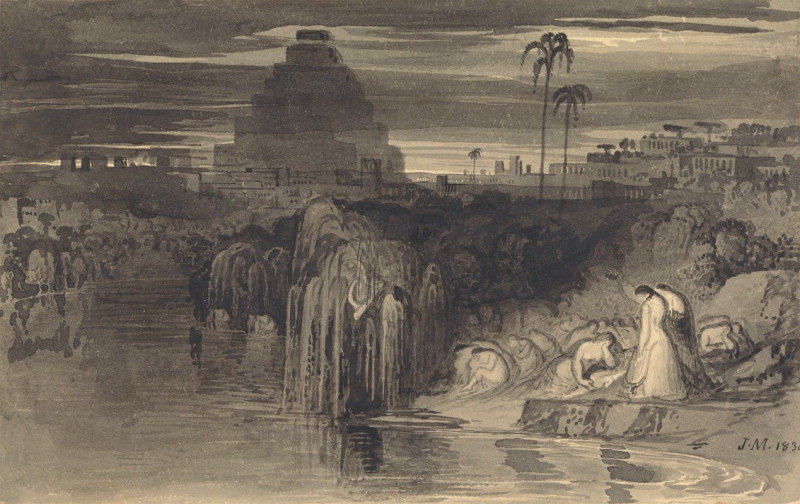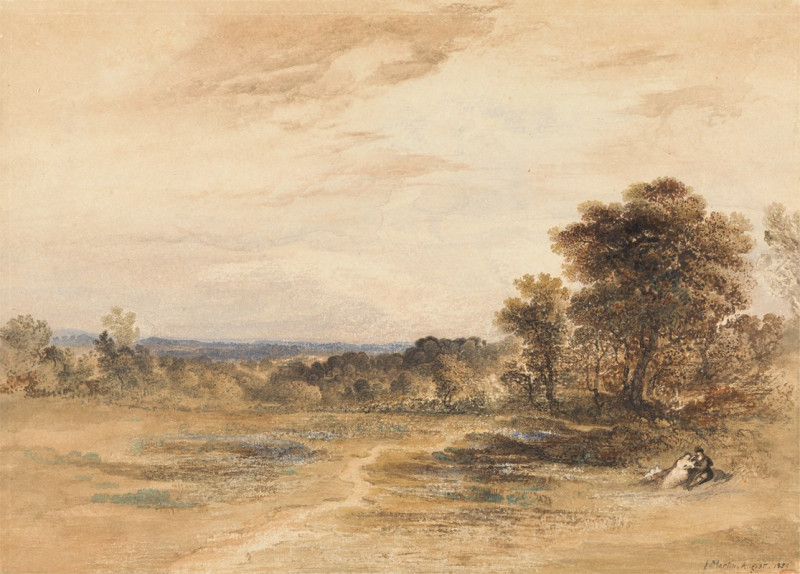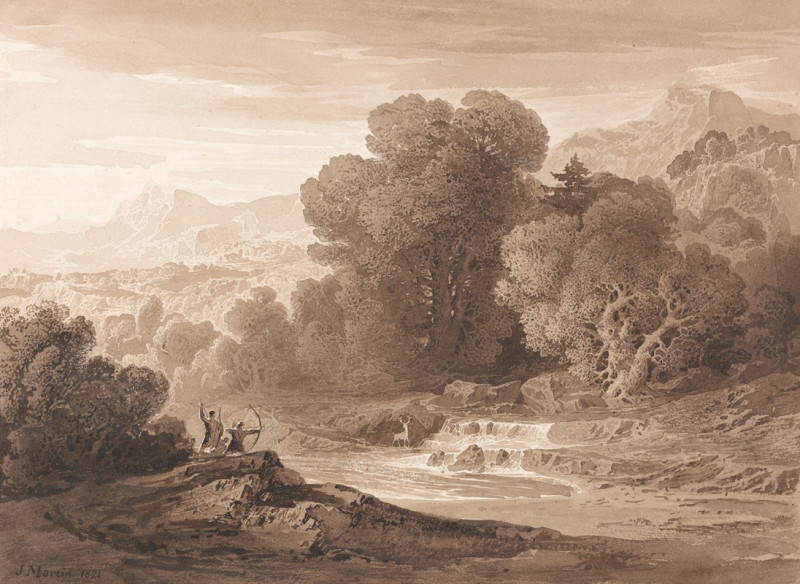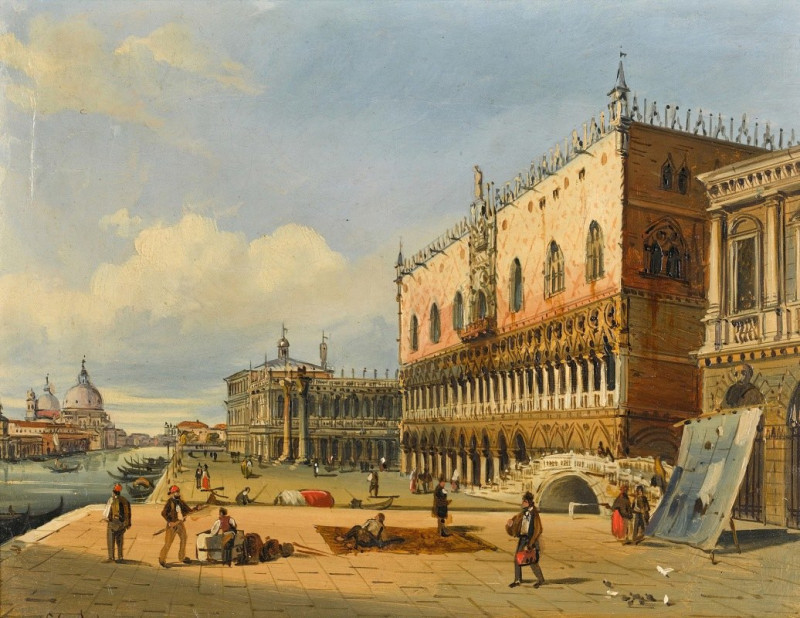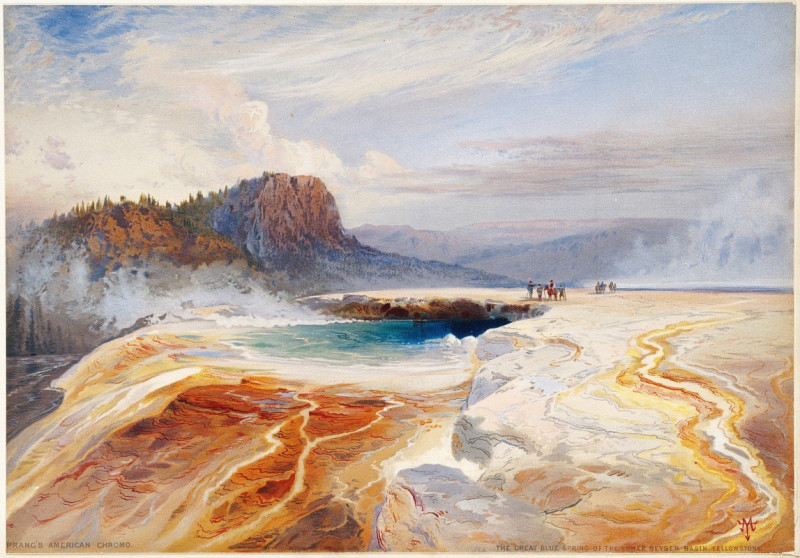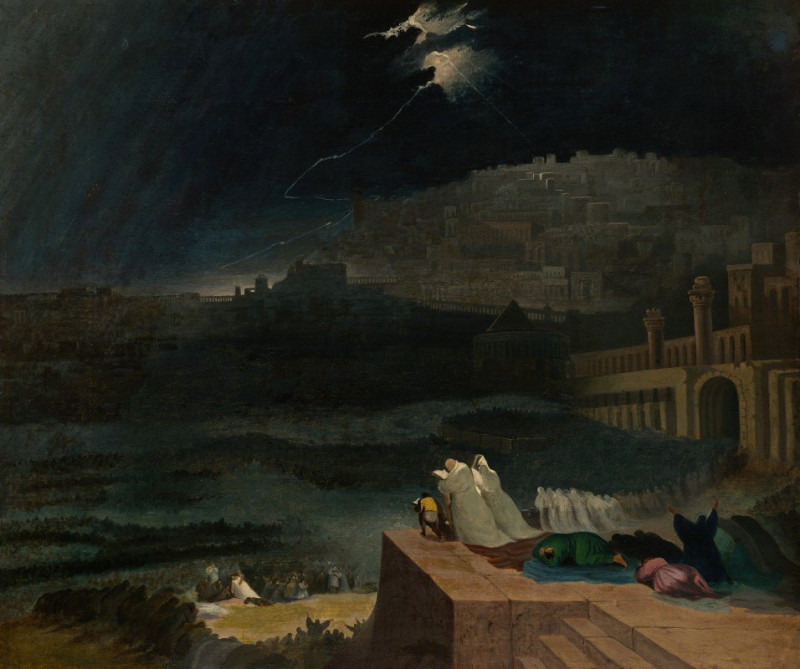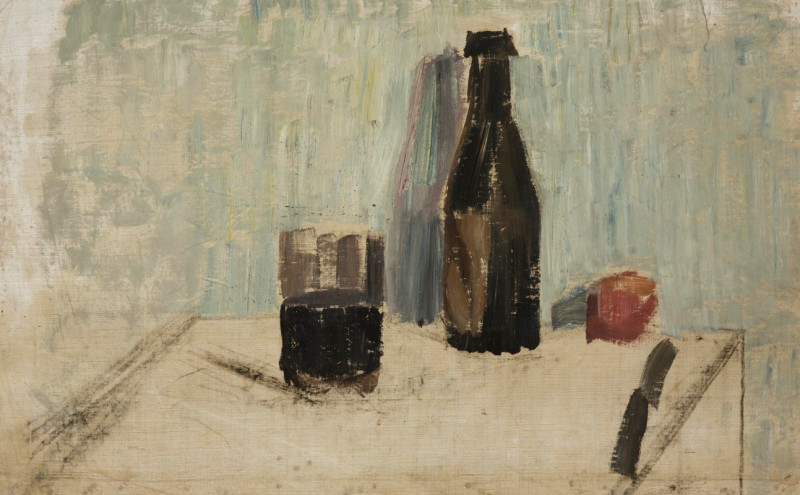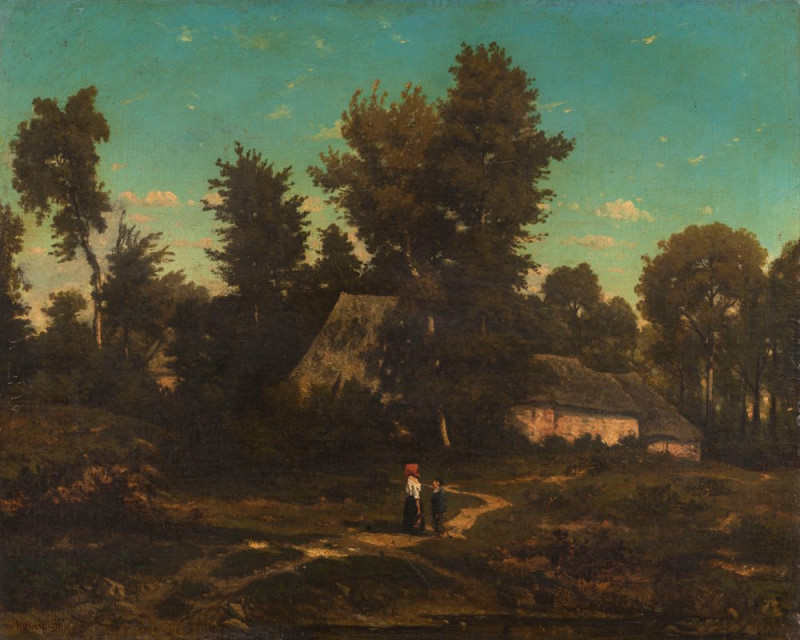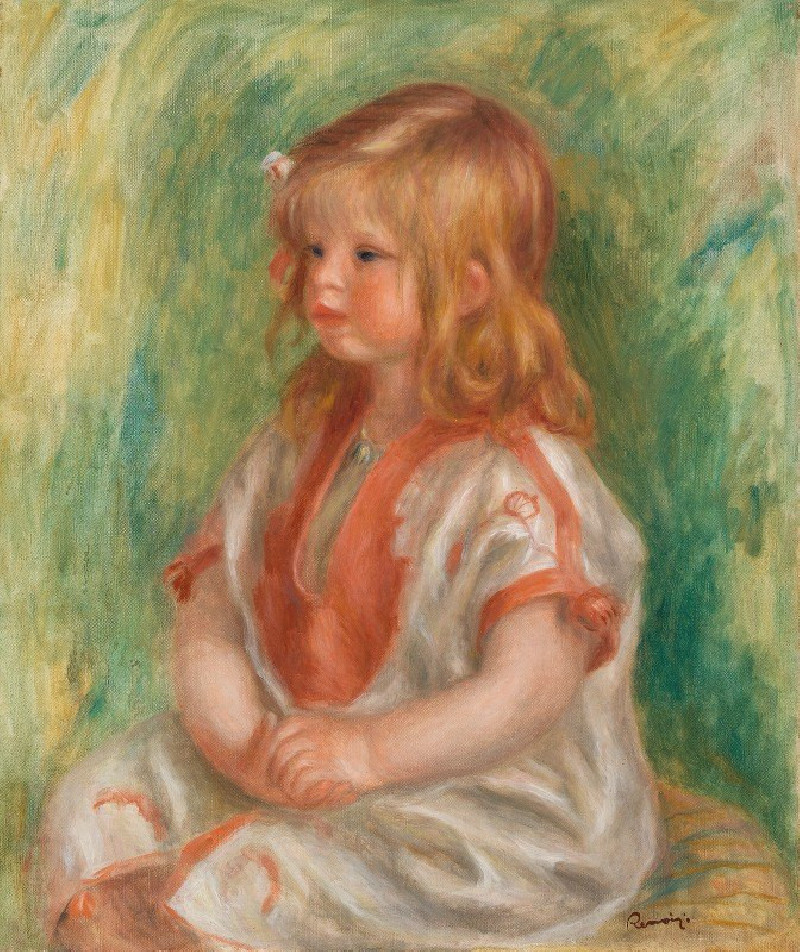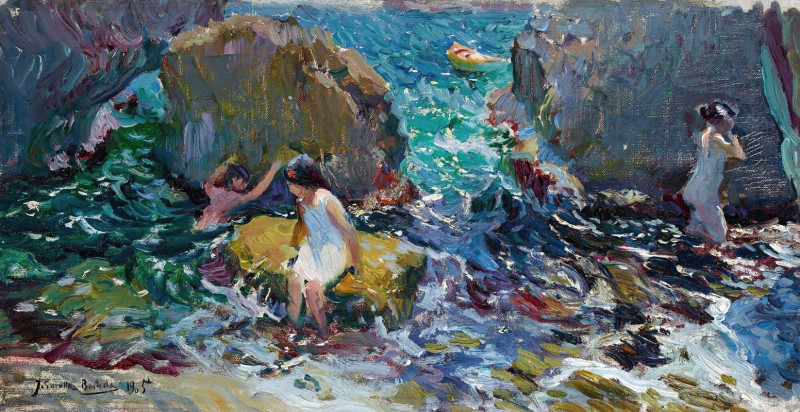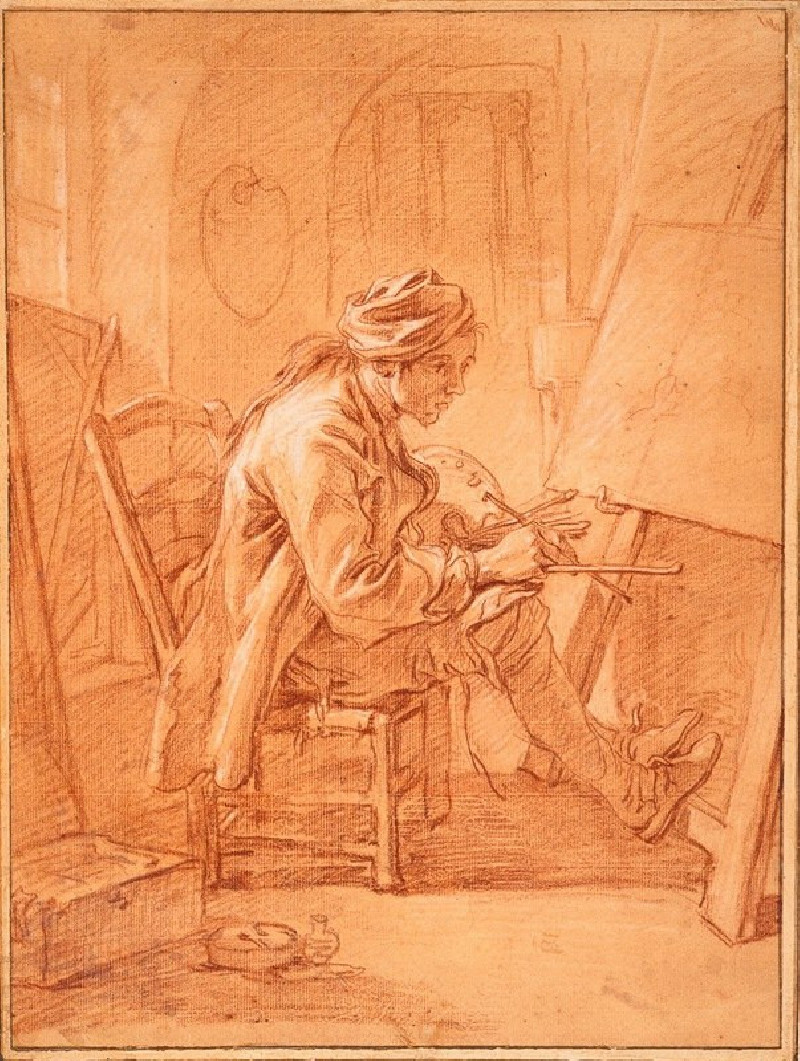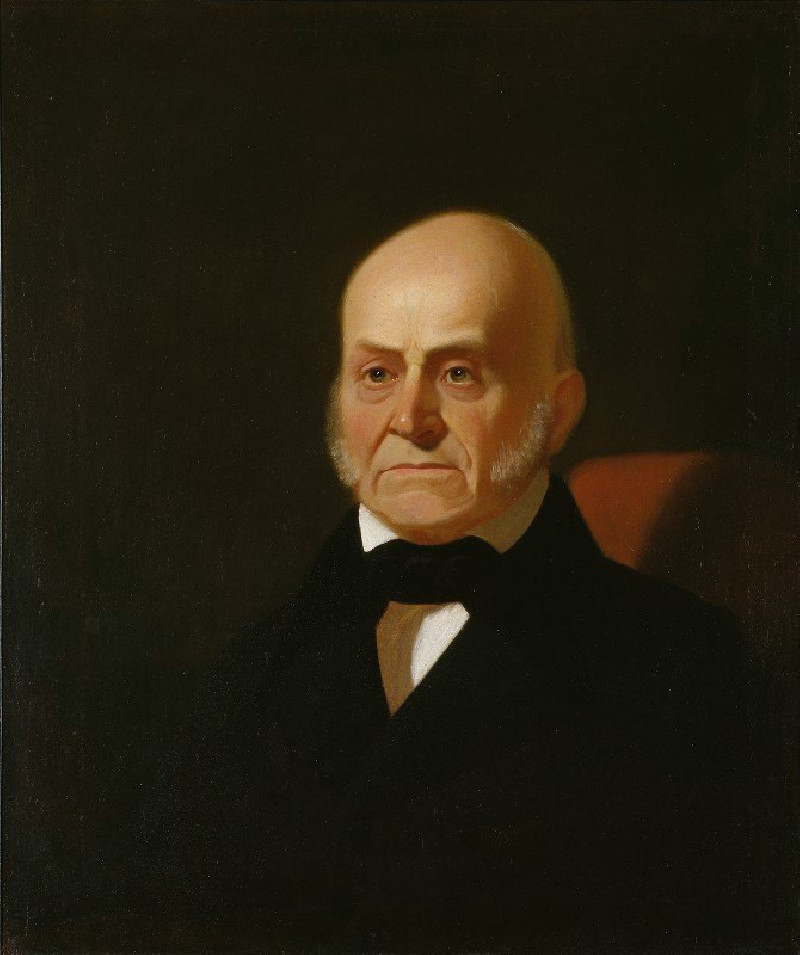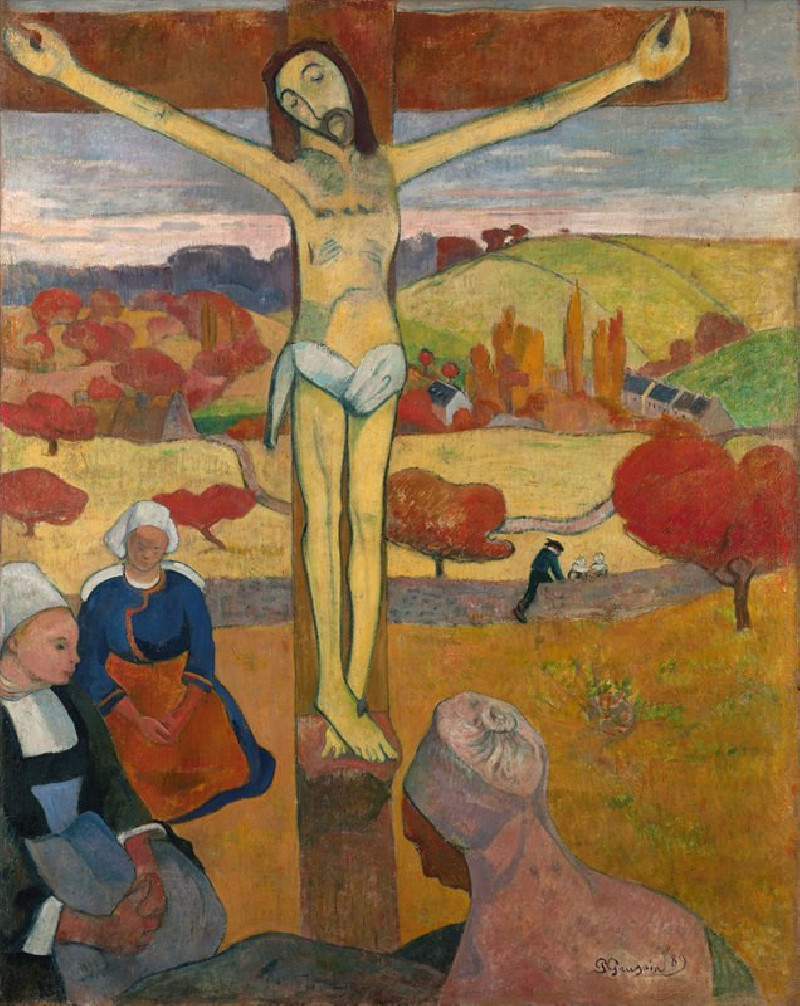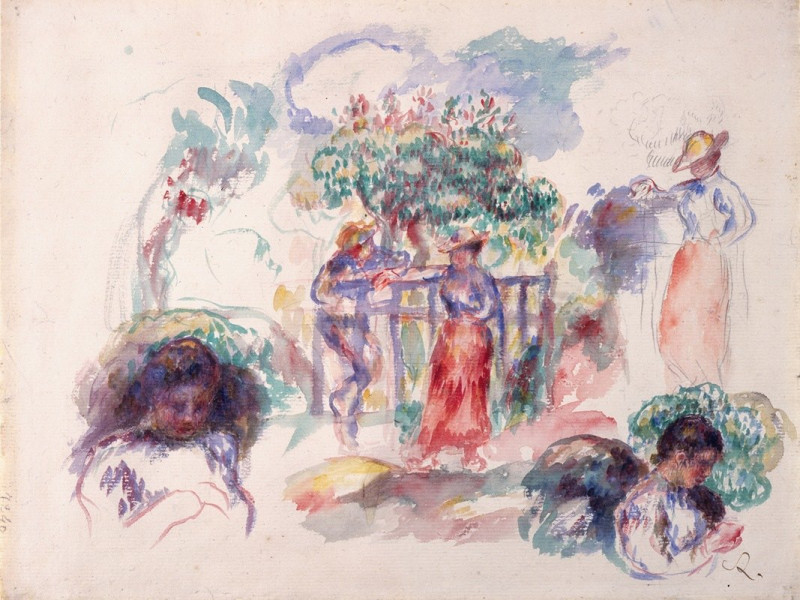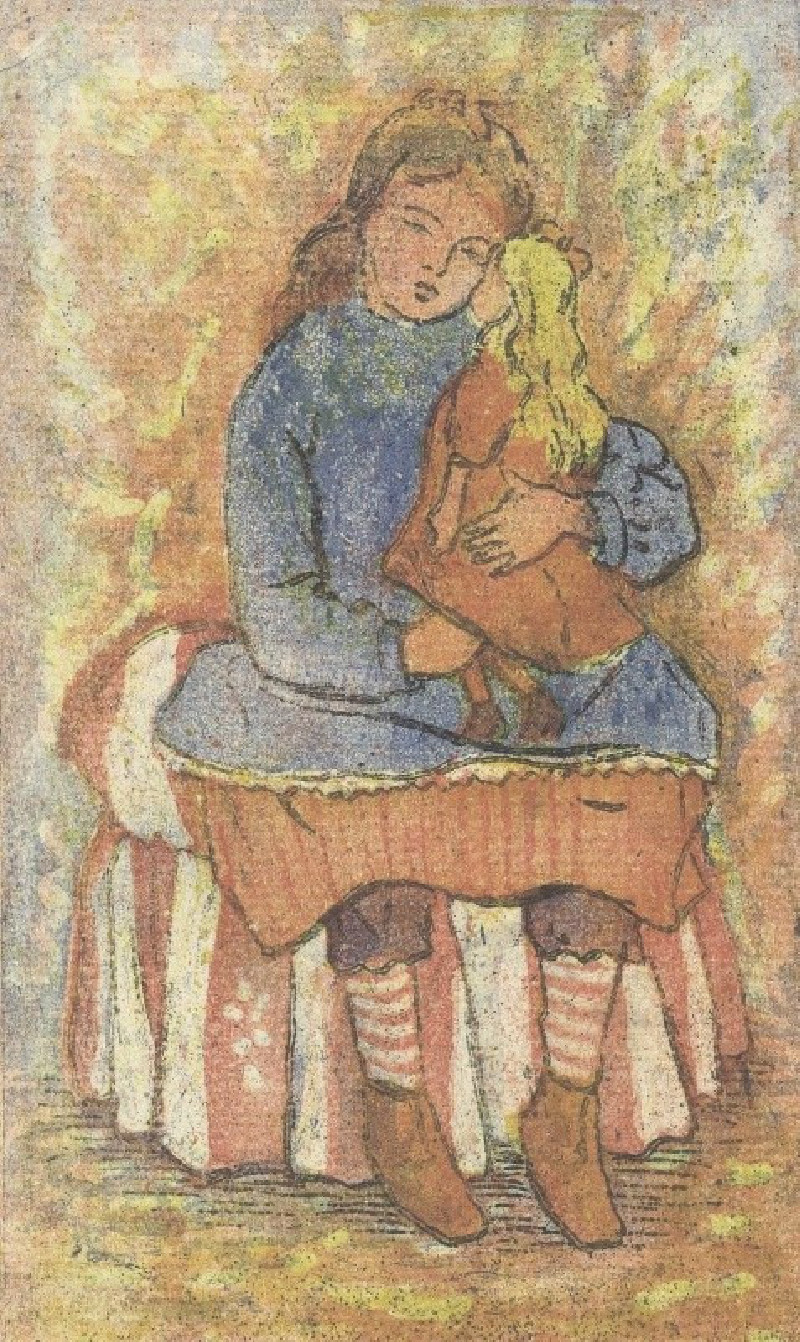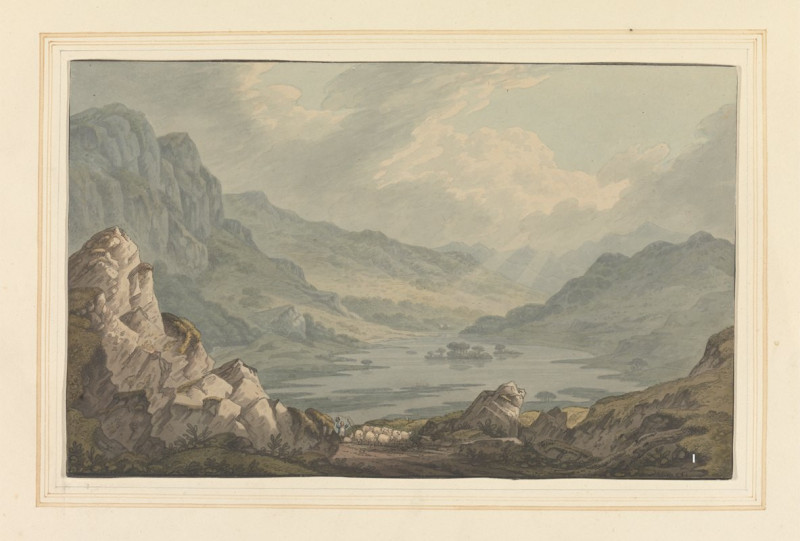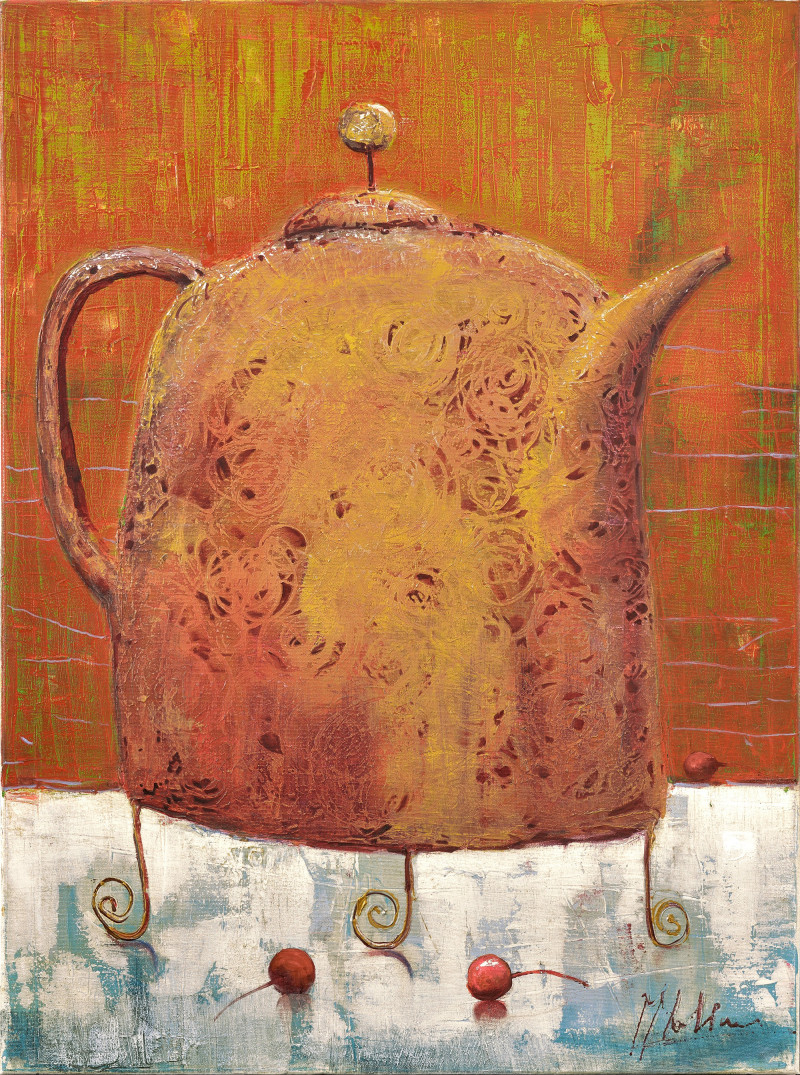Travelers on a Road above a River (1821)
Technique: Giclée quality print
Recommended by our customers
More about this artwork
Welcome to our exhibition of John Martin's evocative and serene artwork, "Travelers on a Road Above a River," created in 1821. This mesmerizing sepia-toned painting captures a tranquil yet dramatic landscape, characteristic of Martin’s renowned style, which fuses romanticism with the sublime.In the foreground, a rugged path winds around towering trees and rocky terrain, giving way to a pair of travelers with their packhorse. This small human presence amidst the vastness of nature evokes a sense of adventure and isolation. As your eyes drift beyond the travelers, the landscape unfolds into a panoramic view, featuring a calm river that meanders through the expansive valley. Beyond the river, a series of waterfalls add a dynamic element to the serene scene, bridging the peaceful valley and the majestic mountains in the distance.The backdrop is dominated by these towering mountains, their outlines softened in the hazy distance, suggesting both the beauty and the unfathomable scale of the natural world. The detailed rendering of the trees and foliage around, rendered with fine, delicate strokes, contrasts sharply with the smooth, ethereal depiction of the sky and distant lands.John Martin's artwork here is not merely a geographical depiction but a poetic interpretation of nature’s grandeur and the human spirit's interaction with it. The painting invites viewers to contemplate the peaceful solitude and the raw beauty of the natural world, reflecting an era that was increasingly concerned with the power and mystery of nature.
Delivery
Returns
John Martin was an English Romantic painter, engraver and illustrator. He was celebrated for his typically vast and melodramatic paintings of religious subjects and fantastic compositions, populated with minute figures placed in imposing landscapes. Martin's paintings, and the prints made from them, enjoyed great success with the general public—in 1821 Thomas Lawrence referred to him as "the most popular painter of his day"—but were lambasted by John Ruskin and other critics.


